48+ Sample Restaurant Menu Templates
-
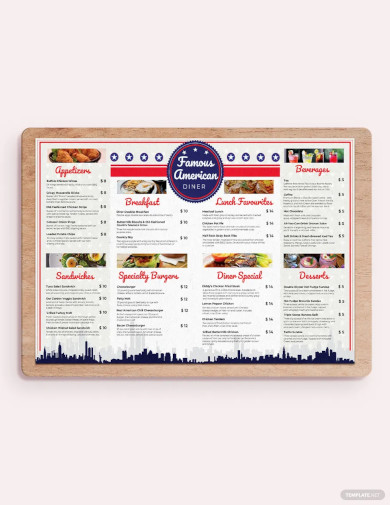
American Dinner Restaurant Menu Template
download now -
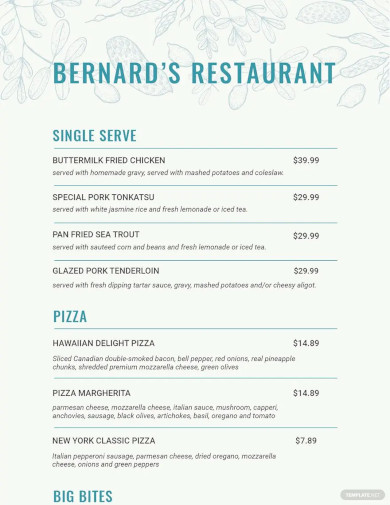
Family Restaurant Menu Template
download now -
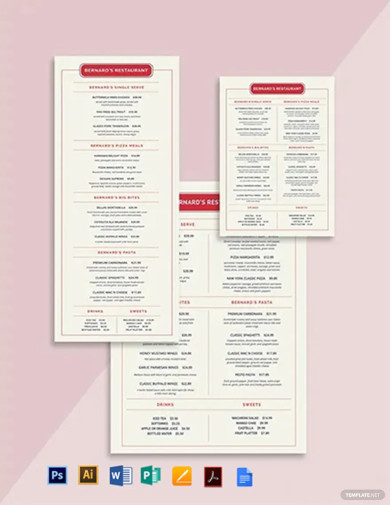
Simple Family Restaurant Menu Template
download now -
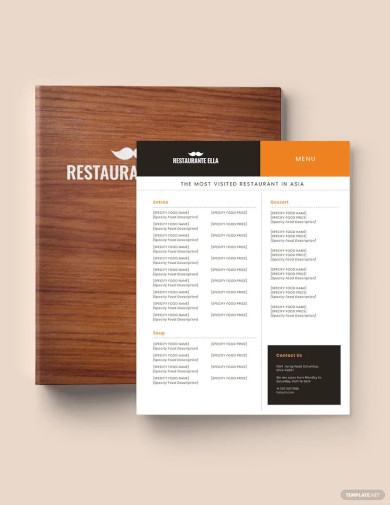
Blank Restaurant Menu Template
download now -
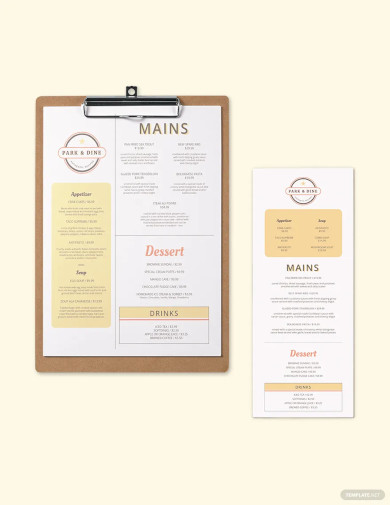
Creative Restaurant Menu Template
download now -

Rustic Restaurant Menu Template
download now -
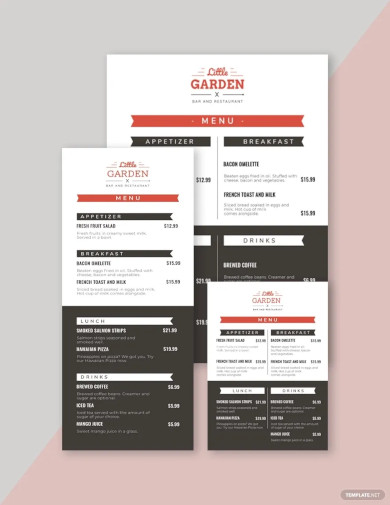
Small Restaurant Menu Design Template
download now -
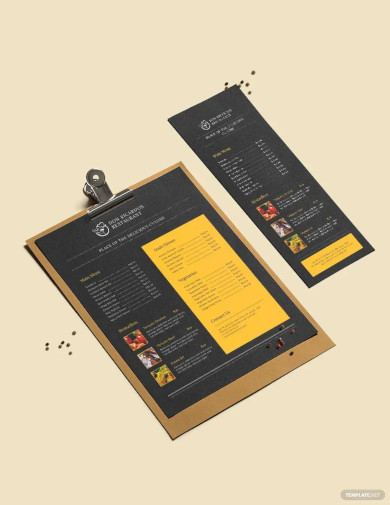
Chalkboard Asian Restaurant Menu Template
download now -
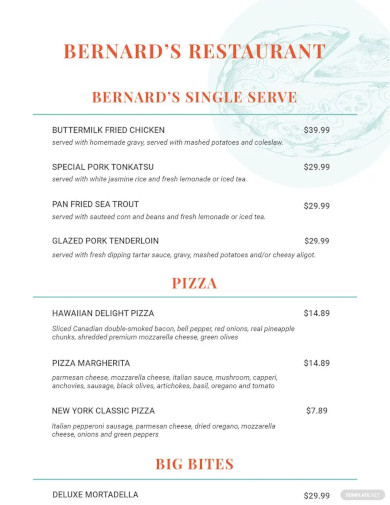
American Family Restaurant Menu Template
download now -
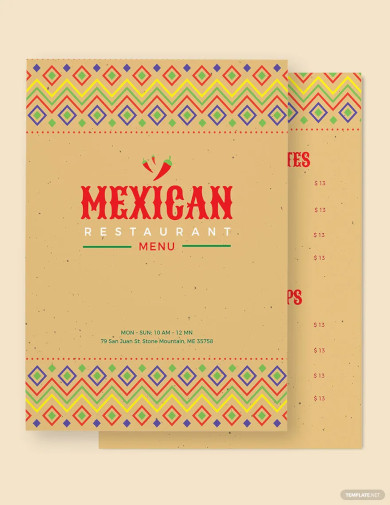
Mexican Restaurant Menu Template
download now -
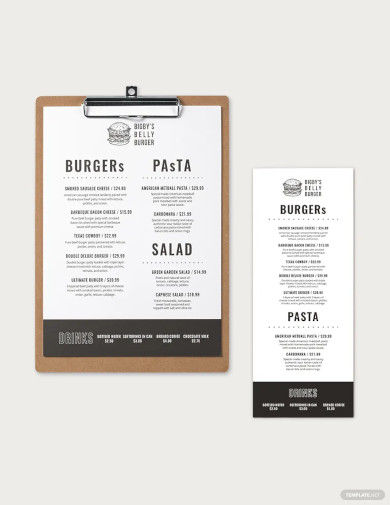
Burger Restaurant Menu Template
download now -
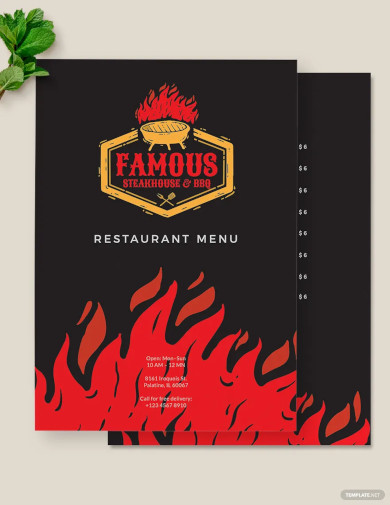
Steakhouse BBQ Restaurant Menu Template
download now -
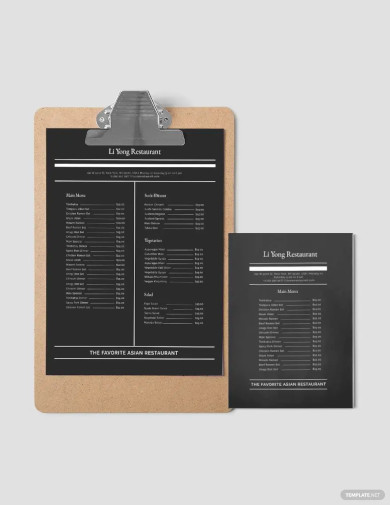
Simple Asian Restaurant Menu Template
download now -
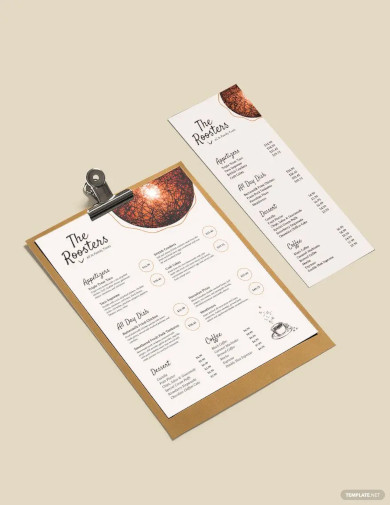
Restaurant Menu Card Template
download now -

Indian Restaurant Menu Template
download now -
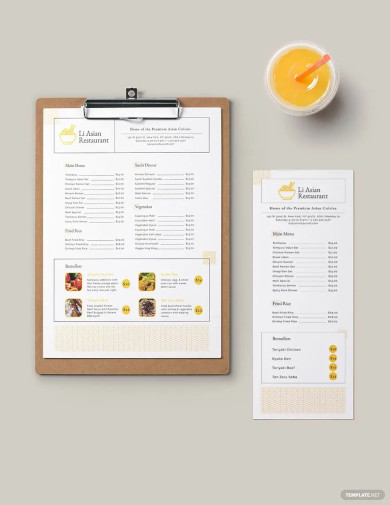
Asian Restaurant Menu Template
download now -

Christmas Restaurant Menu Brochure Template
download now -
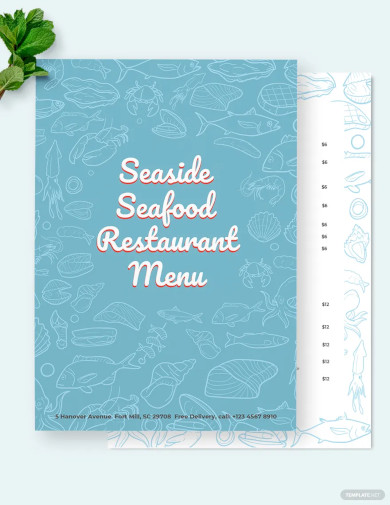
Seafood Restaurant Menu Template
download now -
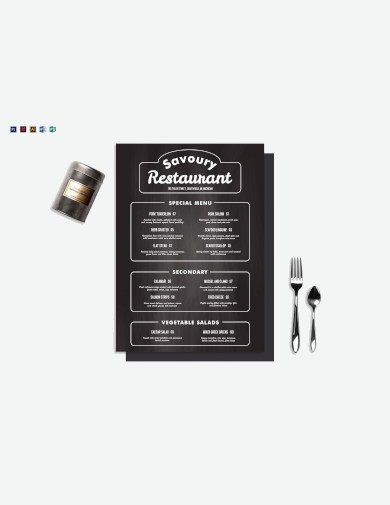
Chalkboard Restaurant Menu Template
download now -
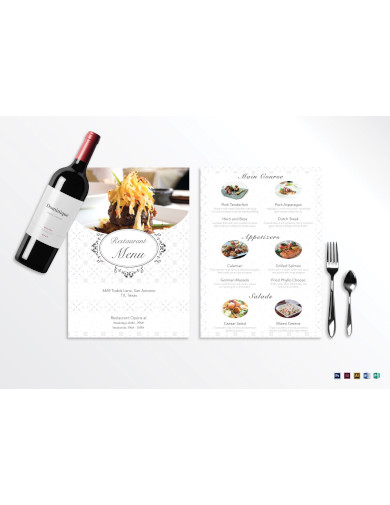
General Blank Restaurant Menu Template
download now -
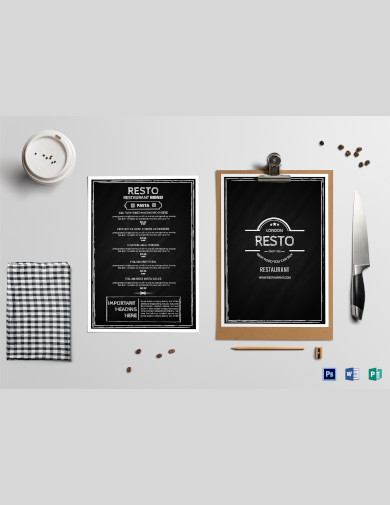
Modern Restaurant Menu Classic Template
download now -
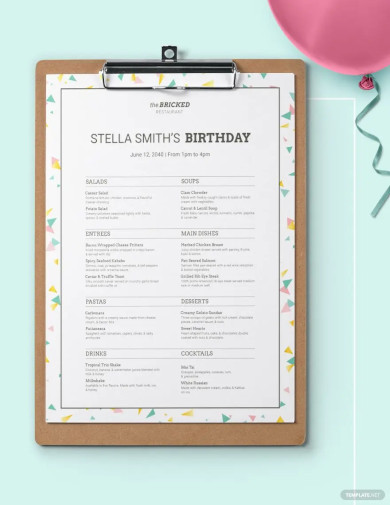
Restaurant Birthday Menu Template
download now -

Japanese Restaurant Takeaway Menu Template
download now -
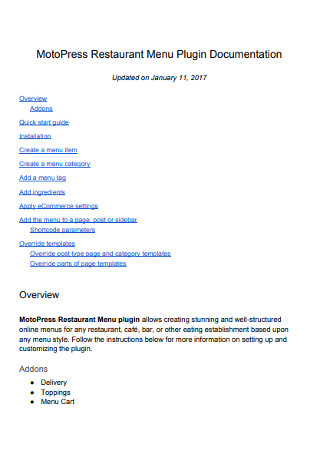
Restaurant Design Menu Documentation
download now -
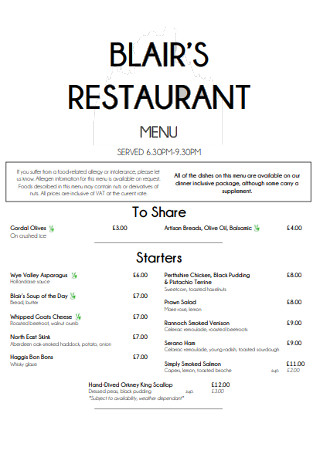
Sample Creative Restaurant Menu
download now -
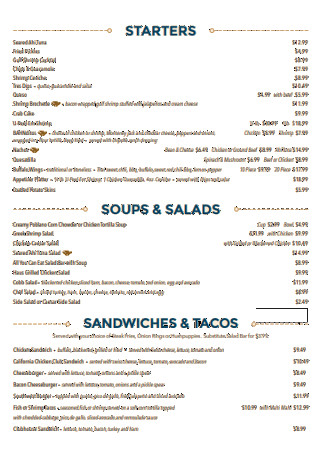
Sample Restaurant Fancy and Bar Menu
download now -
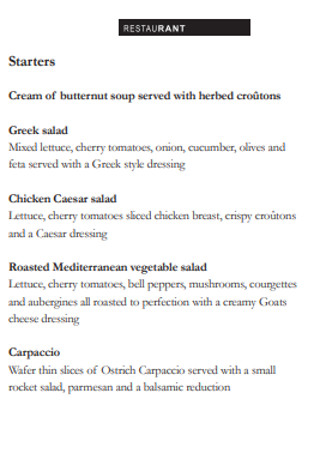
Resort BackgroundRestaurant Menu
download now -

Sample Hotel Cafe Menu
download now -

Weekly Restaurant Fine Dining Menus
download now -

Basic Restaurant Layout Menu
download now -
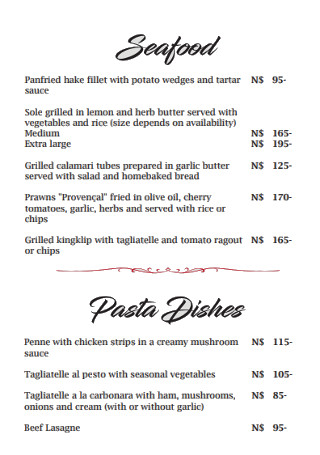
Seafood Restaurant Menu
download now -
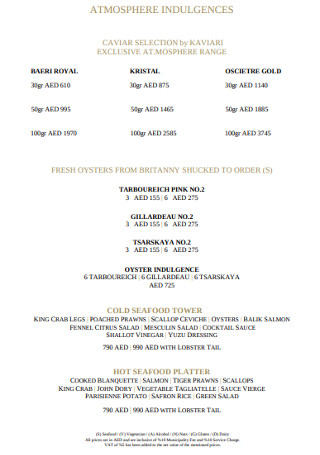
Standard Healthy Restaurant Menu
download now -
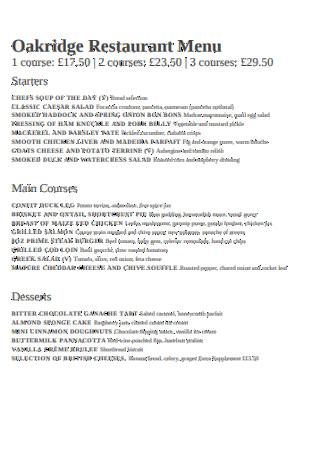
Formal Arabic Restaurant Menu
download now -

Restaurant Dinner Menu
download now -
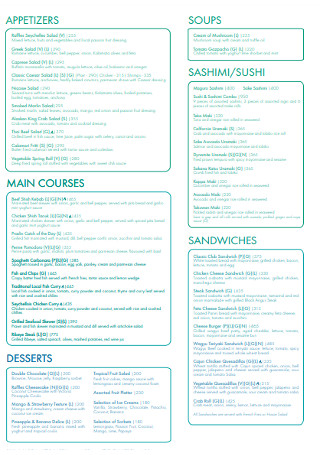
Pool Restaurant Menu
download now -
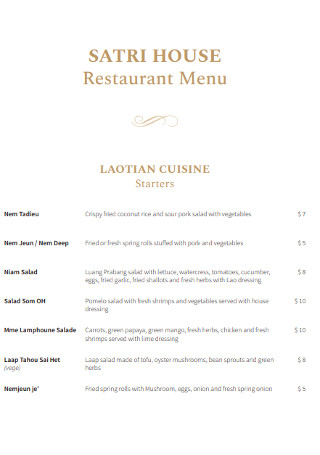
House Restaurant Menu
download now -
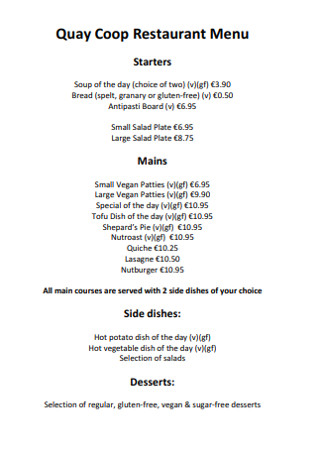
Coop Restaurant Menu
download now -

Professional Restaurant Menu
download now -

Restaurant Dinner Menu
download now -
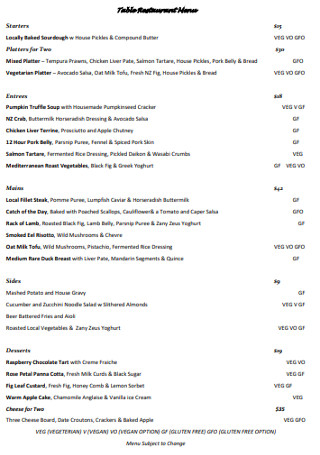
Table Restaurant Menu
download now -
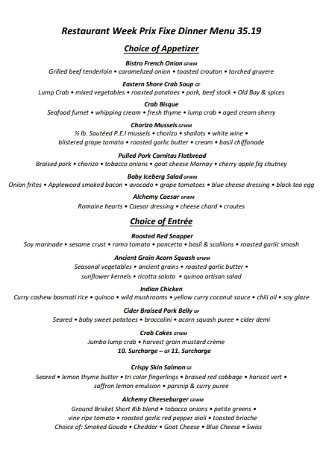
Restaurant Week Prix Fixe Dinner Menu
download now -
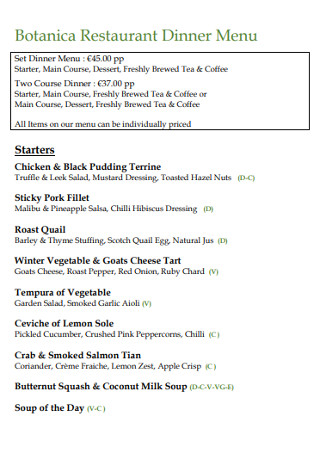
Simple Restaurant Dinner Menu
download now -
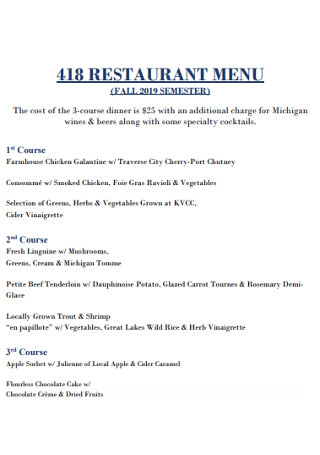
Restaurant Semester Menu
download now -
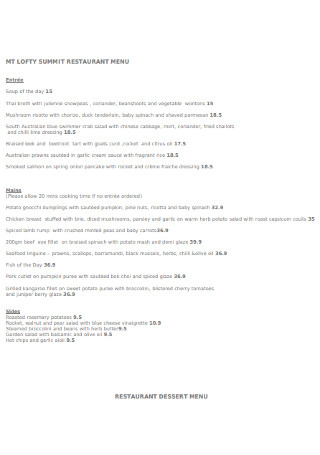
Restaurant Dessert Menu
download now -
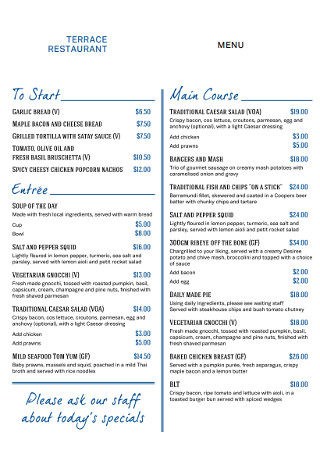
Terrace Restaurant Menu
download now -

Restaurant Dine In Lunch Menu
download now -
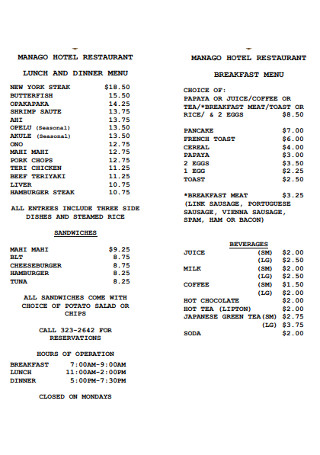
Hotel Restaurant Lunch and Dinner Menu
download now -
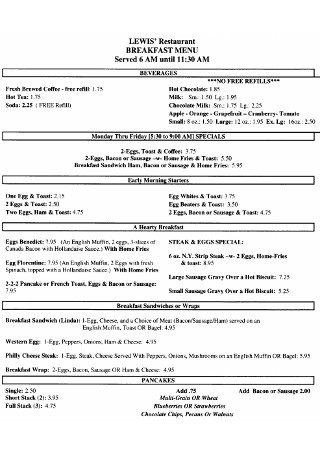
Restaurant Breakfast Menu
download now -
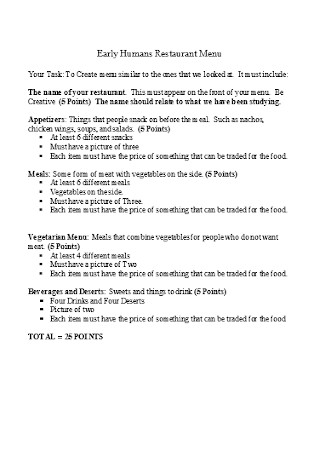
Early Humans Restaurent Menu Template
download now
What Is a Restaurant Menu?
A restaurant menu is a list of food and beverage items along with their respective prices offered to customers of an establishment. They may come in printed sheets of paper, large posters, display boards, or digital screens. It’s a marketing tool that enables the business to communicate what the restaurant has to offer. Items on the menu usually vary depending on the type of restaurant it is and the kind of food they serve. Fast-food restaurants, for instance, utilize display boards more than the traditional hand-held menu cards to make it more accessible to their mass audience.
Some restaurants even choose not to put the usual dishes on display in an attempt to sell their unique and more profitable items. A 2018 survey conducted by Statista shows new cuts of meat and African flavors as the leading trends in food items on restaurant menus in the U.S. It may sound peculiar to the average person, given how it’s not what you usually find in a menu at Burger King, but the most unique menu items tend to attract the most attention. What you choose to put on the type of menu you are creating would depend on what you want to sell to your target customers.
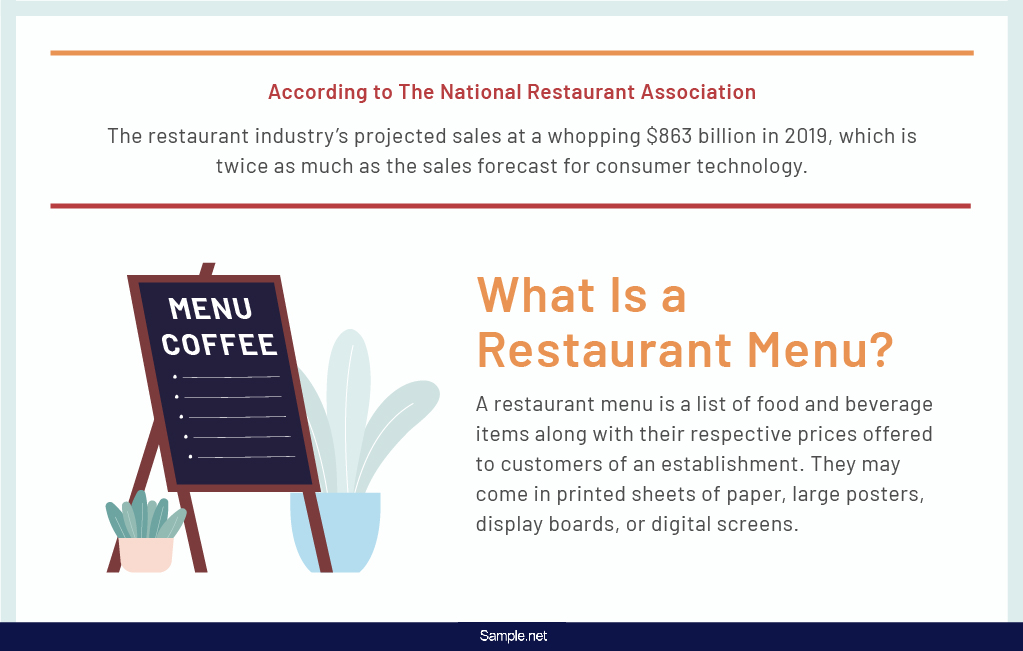
Types of Restaurant Menus
All modern restaurant menus fall into five general categories. By knowing the differences between them, you can select the ideal menu type for your restaurant business. This also makes it easier to strategize on fresh marketing tactics that may help your menu items sell more.
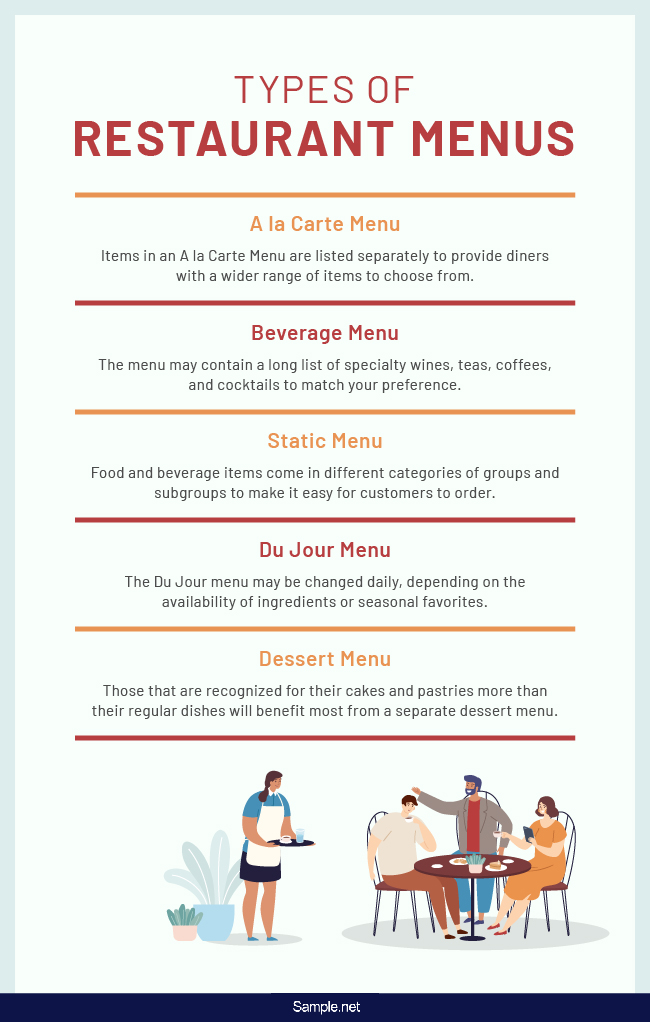
How to Create a Restaurant Menu
Some menus are good, others are mediocre, while a selected few are downright disappointing. Designing a menu that looks exactly the same as a dozen others is not a good B2B marketing strategy for your business. If you want to stand out, you need to be mindful of how the contents of the menu may maximize profits and encourage repeat customers. It’s a simple approach that requires careful planning and proper execution to conquer. Easier said than done, right? To get you started with the design process, here are a few steps that you could follow.
Step 1: Plan Your Layout
The first thing you need to do is to brainstorm ideas for your content. Figure out what goes on the menu by noting down the basics on a piece of paper. Branding is a significant factor to consider when deciding what elements to incorporate into the menu’s layout. Apart from that, make sure you know what dishes and drinks to showcase in each page of the material. Once you know what to include in the menu, you can then proceed to the next phase of the process.
Step 2: Write the Descriptions
You can have the most visually appealing layout in the world, but if your written content fails to overpower the menu’s design elements, then you’re wasting all your efforts for nothing. The primary objective of a menu is to convince customers to buy your products and obtain higher revenue. If your restaurant menu only manages to attract customers without leading them to the next level of the sales funnel, then the marketing material is not doing enough to keep your business alive. What you need are item descriptions that will entice readers to order. You can keep it informative by covering all of the main ingredients and other special details that readers would want to know about.
Step 3: Organize Your Elements
The layout of the menu is a reflection of the restaurant itself. To stay true to your brand, conceptualize a design that best defines the nature and principles of your business. This will remind customers of what your restaurant is best recognized for through the colors, styles, and overall theme that you incorporate into your layout. Make sure these elements are added strategically to your content to prevent a cluttered design.
You can also opt to use a menu template as an alternative. Starting from scratch can be a daunting process for any beginner, which is why design templates are a recommendable substitute for most restaurateurs. Just remember to customize the template to meet company standards and branding requirements.
Step 4: Add Photos with Caution
You may have to hire a professional photographer for the job or practice your knowledge in photography and editing to help refine your food presentation skills. A menu design dramatically benefits from the careful use of white space to deliver your marketing message, which often means using images that are taken from the right angle of each frame. High-quality photos of your offered goods are sure to make a positive impact on a customer’s ordering decision.
Step 5: Finalize the Content
Take a moment to proofread your restaurant menu before getting it printed. Design elements are not the only things to look out for, as writing the wrong words or numbers may change a customer’s perception toward the restaurant. Even a minor typo in your content can be a costly mistake that you wouldn’t want to risk. Thus, be sure to read over your restaurant menu before moving forward to the final step of its production.
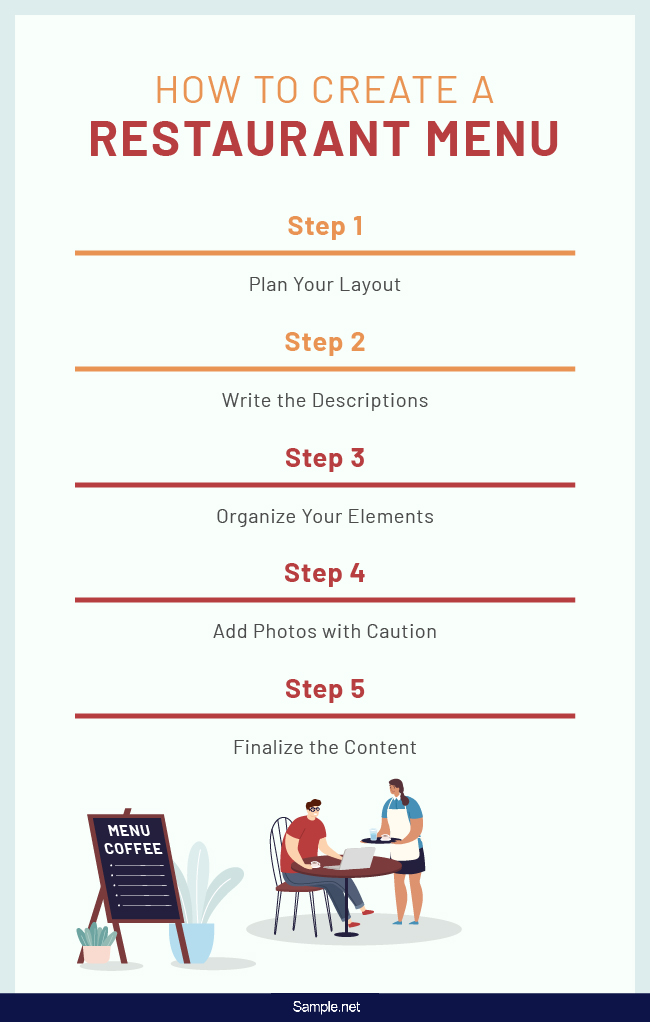
The Dos and Don’ts of a Restaurant Menu
It’s a well-known fact that menus are the most effective promotional tool for businesses in the restaurant and food service industry. Not only can they draw foot traffic to your restaurant, but they can also get customers to spend more than usual. It’s an opportunity to make an impact with new and repeat customers for higher conversions and better sales numbers. To learn more about the tricks and techniques of the trade, refer to the following guidelines.
Dos
1. Do use descriptive labels.
Fancy dish names easily capture a person’s attention, but even that won’t be enough to keep them interested. You have to be creative when describing your offers to make them sound more appealing to customers. Descriptive labeling is a smart technique that restaurants use to make an otherwise basic dish seem like a delicious meal they won’t find anywhere else. With that said, take the time to write enticing copy for your content. Using evocative vocabulary will prove to be an advantage when applied correctly.
2. Do categorize the contents of your menu.
Arranging items on your menu efficiently will help customers order quicker. People tend to stay on a page a lot longer when items aren’t categorized into proper sections. This will lengthen your staff’s waiting time and make it difficult for them to attend to other customers right away. A clever strategy is to feature your most valuable items in a prominent location on your menu. You can use lines, borders, or boxes to draw attention to the area. Studies show that people tend to follow a predictable pattern as they scan over a menu. By studying this pattern, you’ll know exactly what items to put on your menu and where.
3. Do remember your brand.
Always keep your brand in mind. The menu should say something about your brand and what it stands for. Everything from the language to the visual elements you incorporate into the menu must complement how you want your brand to appear to a targeted audience. It should give customers a sense of what your business is and what it aims to achieve as a food service establishment in the marketplace.
4. Do use separate menus for drinks and desserts.
If you offer a wide variety of food and beverages in your restaurant, using a separate menu to showcase your drinks and desserts would be a good option. This is one way to make them stand out and remind customers that they exist. It doesn’t have to come in the same size and form of your menu, as you could always opt for a small menu card or table card to highlight specialty drinks and desserts effortlessly. Displaying these items somewhere visible can also help entice customers to order more than they intended.
5. Do invest in quality printing.
Menus are the face of your restaurant. It’s one of the first things that customers encounter when they set foot in the building. What we see along with the texture of the things we touch can significantly affect our perception toward the value of a good or service. Quality prints also say a lot about the credibility of your business. Think of it as something that could potentially make or break the success of your restaurant. Most people see it as a reflection of what your business is capable of serving its customers, which can leave a positive impact on your brand and your conversions.
Don’ts
1. Don’t make a price list.
This doesn’t mean you shouldn’t tag the price of each item in your menu, but listing the cost of each dish on one side of the page will likely lead customers to order based on costs. People will be more conscious about how much they are spending and how much they could be saving if they choose one dish over the other. It doesn’t do good business, and it does force customers to believe that your offers are pricier than your competitors. Avoid adding currency signs as well. This will only remind a customer of an item’s value, discouraging them from adding anything more to the tab.
2. Don’t make it hard to read.
Be wary of reading patterns and see how they apply to your menu design. The average time people spend on a menu is 109 seconds, which is enough to deliver your elevator pitch and make a lasting impression. One major element that matters in good menu design is typography. The fonts you choose for your text must be clear and easy to read. Steer clear of creative fonts that look good on print but are challenging to read from a glance. It’s also wise to keep your descriptions short and specific to persuade a customer in as few words as possible.
3. Don’t put too many items.
One of the biggest mistakes that restaurant owners do is try to expand their menu in hopes of appealing to a broader audience. It’s a bad idea for several reasons. For one, not everybody has the time to flip through a ten-page menu card. Not only will it frustrate your customers, but it will also lengthen their ordering time. Customers will feel compelled to settle with a dish they aren’t too sure about as opposed to an item they actually like. It’s a dining experience that is bound to bring more negatives than positives to your business.
4. Don’t use unprofessional graphics.
Never settle for poor graphics. You might not have the budget to invest in a professionally designed menu card, but that doesn’t give you an excuse to use clip arts and other unprofessional graphics that may damage the integrity of your menu. You don’t need to spend a fortune to produce a high-quality menu design, as you could quickly turn something dull and boring into a marketing masterpiece with the help of the right skills. Mess around with different design techniques and study what your competitors are doing. Sparing a couple of minutes of your day to learn the tricks of visual marketing is bound to generate favorable results along the way.
5. Don’t do it alone.
If you think you can do better with your restaurant menu, seek the assistance of a professional. You can hire a consultant to look it over and make considerable suggestions. You can even have your friends, colleagues, or anyone trustworthy to offer you honest feedback on your latest creation. Sometimes, a few simple changes could mean the difference between an ordinary menu design and a profitable one.
Designing a restaurant menu is not a walk in the park. There’s more to the process than merely adding photos and descriptions into a list of offered items. Chances are you already have an exciting story to your name that you want your market to embrace. Your menu should translate this story in print to attract attention, reinforce your brand, and sell your restaurant’s most valuable goods.